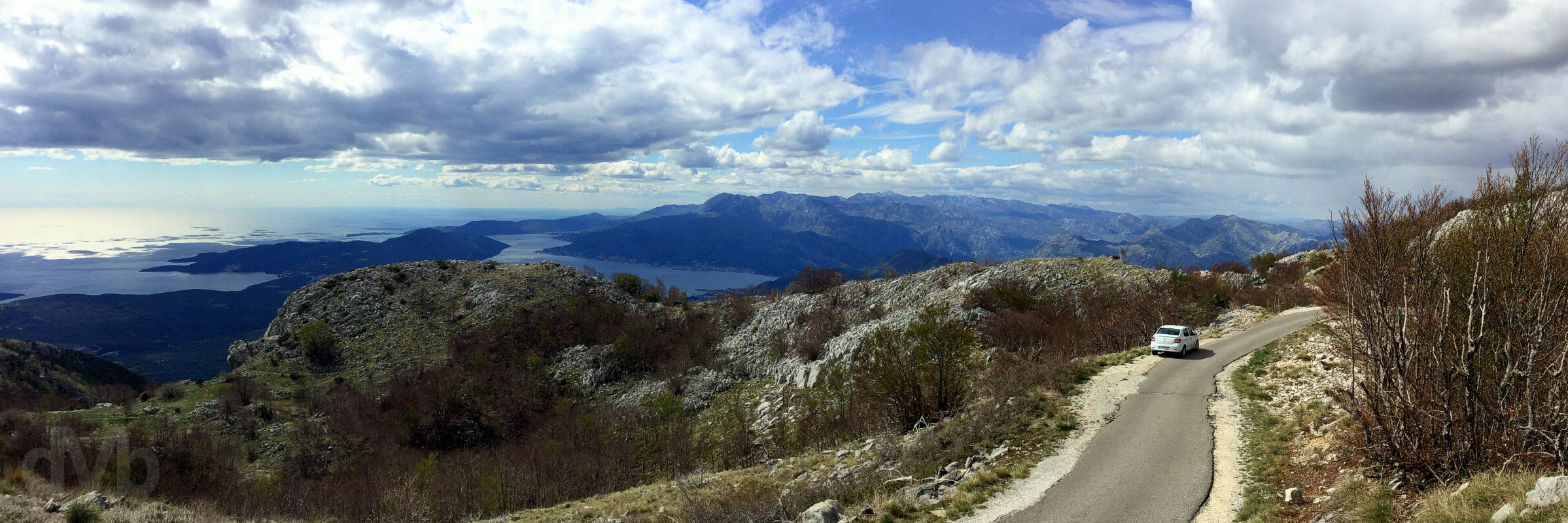Lovcen National Park, Montenegro
”And what an approach it was, the steep, narrow hairpin-happy P1 snaking up the hills behind Kotor providing epic Bay of Kotor vistas. I lost count of the amount of times I stopped to savour the views on the so-called Kotor Serpentine, and that was even before I reached the the lofty heights of the highest mausoleum in the world.”
Image || The Njegos Mausoleum (right), the world’s highest mausoleum, atop the 1,657-metre-high peak Jezerski Vrh in Lovcen National Park, Montenegro. April 20, 2017.
Lovcen National Park, Montenegro
I initially tried to access Lovcen National Park yesterday, thwarted by a closed road outside the old Montenegrin capital of Cetinje. They seem busy upgrading the country’s windy one-lane roads; there is a lot of messy roadside construction going on, not to mention a dearth of appropriate ‘Road Closed’ signage. Yesterday’s failure meant an alternate approach to the park was called for today. And what an approach it was, the steep, narrow hairpin-happy P1 snaking up the hills behind Kotor providing epic Bay of Kotor vistas. I lost count of the amount of times I stopped to savour the views on the so-called Kotor Serpentine, and that was even before I reached the the lofty heights of the highest mausoleum in the world.
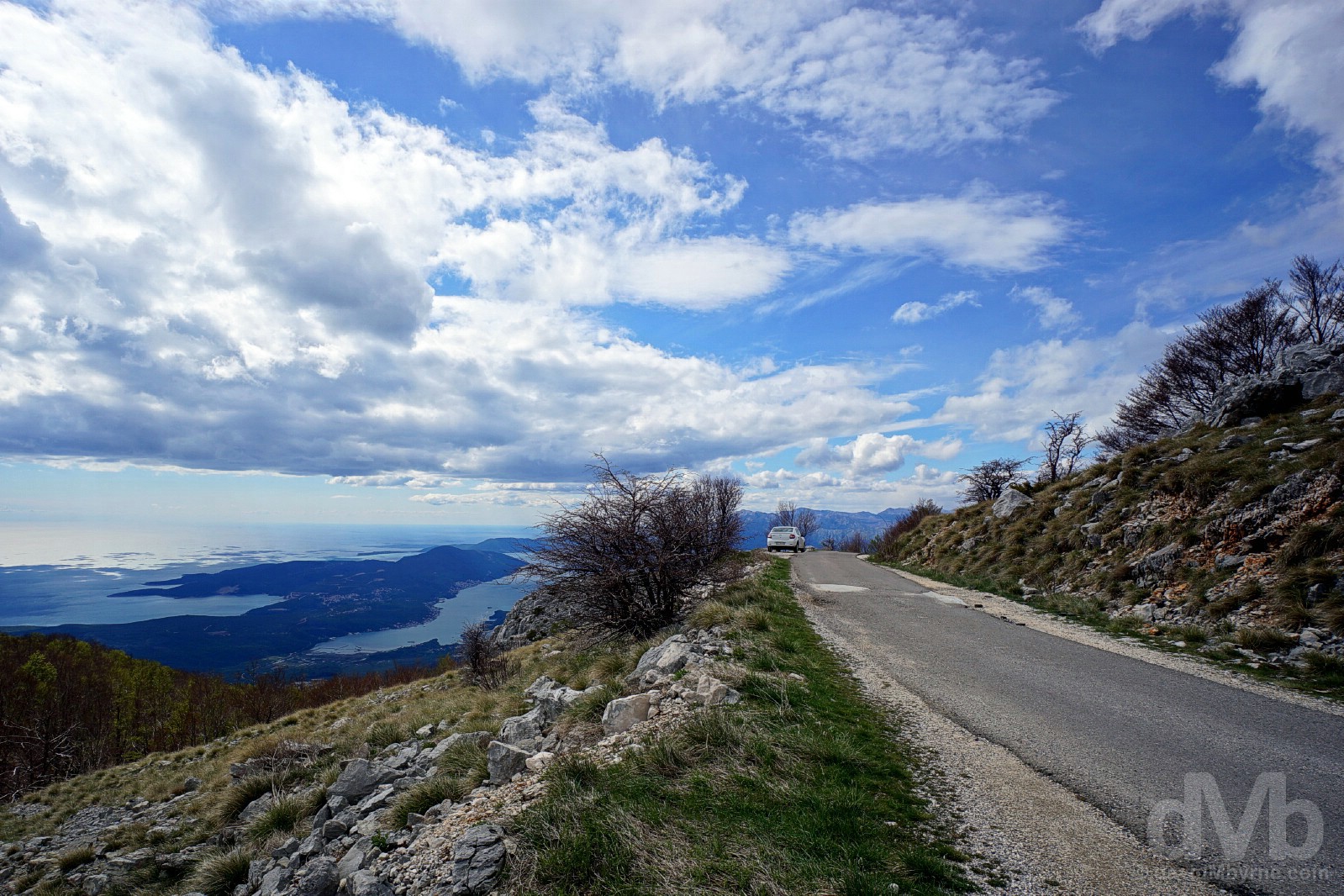
The distant Adriatic Coast & the Bay of Kotor as seen from the road to Njegos Mausoleum in Lovcen National Park, Montenegro. April 20, 2017.
Montenegro Overview
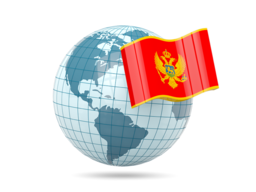 Montenegro
Montenegro
Region – Southeastern Europe/The Balkans (dMb tag: The Balkans). Capital – Podgorica. Population – 680,000. Official Language – Montenegrin. Currency – €uro. GDP (nominal) per capita – US$6,630 (80th). Political System – Parliamentary republic. EU Member? – No (as of April 2017). UN Member? – Yes (admitted June 2006). G20 Member? – No. Size – 14,000 km² (Europe’s 10th smallest country, slightly larger than the US state of Connecticut, or about two-thirds the size of Wales). Topography – Varied. Mostly mountainous interior with a narrow coastal plain. Formation/Independence – 2006 (following the peaceful dissolution of the former State Union of Serbia and Montenegro, itself formed in 1992 following the breakup of Yugoslavia). UNESCO World Heritage sites – 4. Tourism Catchphrase/Slogans – Breathtaking Beauty; Wild Beauty. Famous For – Being Europe’s baby, its newest country; historic walled old towns, scenery; the azure Adriatic; partying. Highlights – The Bay of Kotor; the Adriatic coast; Durmitor National Park. Montenegro Titbits – Officially Crna Gora, Montenegro is the country’s better-know Italian name (which translates into English as ‘Black Mountain’); the country’s 294-kilometer-long azure Adriatic coastline boasts 117 beaches. Montenegro Observations – The roads are tight; as in most of the Balkans, unfinished construction projects are everywhere & blight the otherwise stunning landscape; most essentials – coffee, beer, meals out, a hostel bed, parking – are very economical, petrol not so much; everyone seems to smoke everywhere including in cafes & restaurants; the locals are, for the most part, very welcoming & friendly; you’re never far from a church or monastery (or from anything in tiny Montenegro); coffee is served with a straw. You don’t have to use it of course but it’s a somewhat bizarre accompaniment to an espresso.
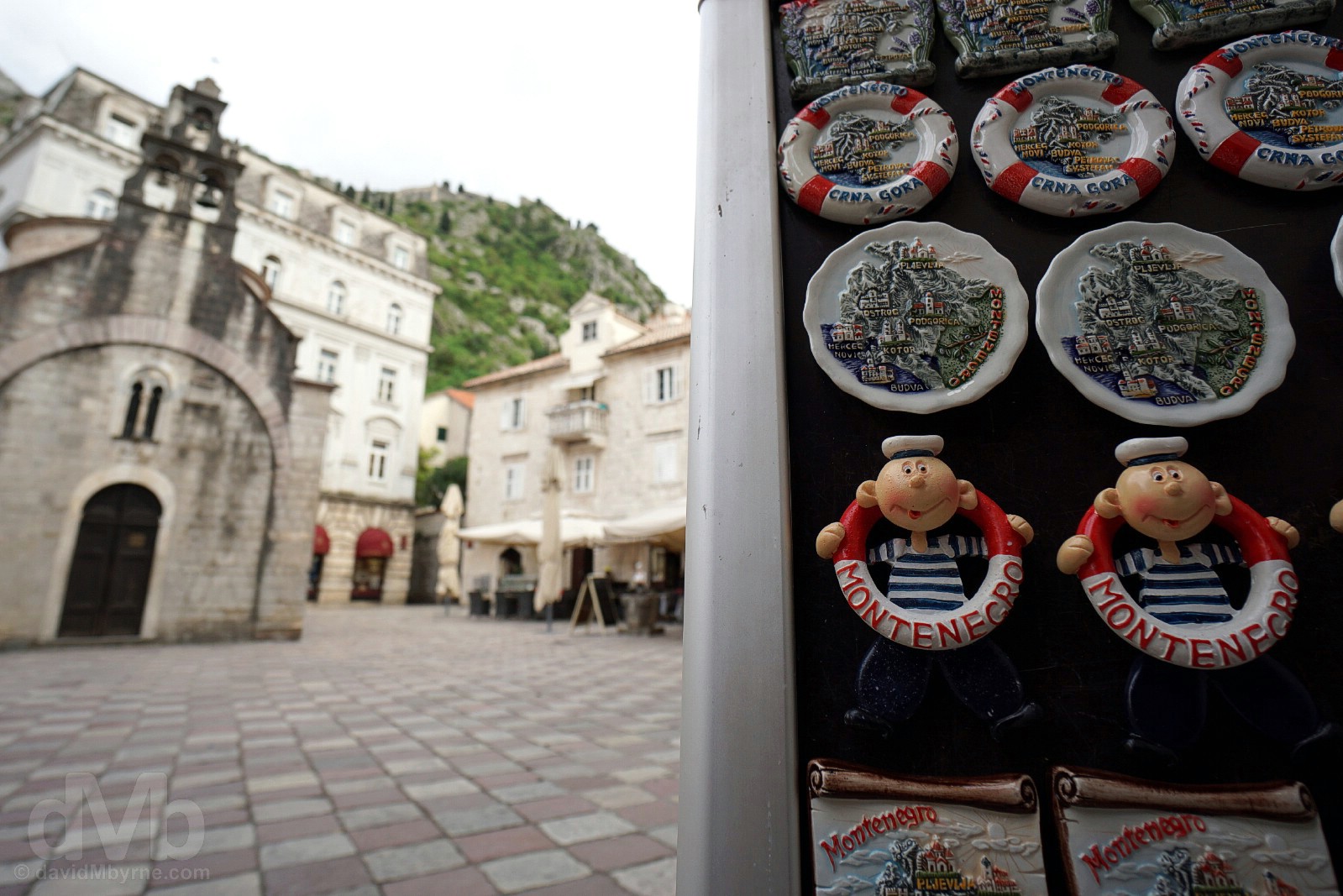
Trg sv Luke (St. Luke’s Square), Stari Grad (Old Town) Kotor, Montenegro. April 19, 2017.
Visits – 1 (April 2017). Where I went/What I saw – The Bay of Kotor (Perast, Kotor & Porto Montenegro); Lovcen National Park & the Njegos Mausoleum; The Adriatic Coast (Budva & The Budva Riviera (Sveti Stefan)); Lake Skadar National Park; Podgorica.
Rearing up directly behind Kotor, Mount Lovcen is the symbolic black mountain that gave Montenegro its name; Montenegro is the country’s better-know Italian name which translates into English as ‘Black Mountain’. Lovcen’s overwhelmingly rocky terrain has hiking trails, narrow roads & stunning views (some say you can espy Italy on a good day). It’s also home to Mount Lovcen National Park. Proclaimed in 1952, the small 62 km² (15,400 acre) park encompasses the central and loftiest portion the mountain massif, a barren region where twin peaks dominate. The highest point, 1,749-metre-high Mount Lovcen itself, is home to some ugliness in the form of antennae, but it’s the second-highest peak, 1,657-metre-high Jezerski Vrh, where you’ll find the road ending and the steps – oh the steps – to the park’s Njegos Mausoleum taking over.
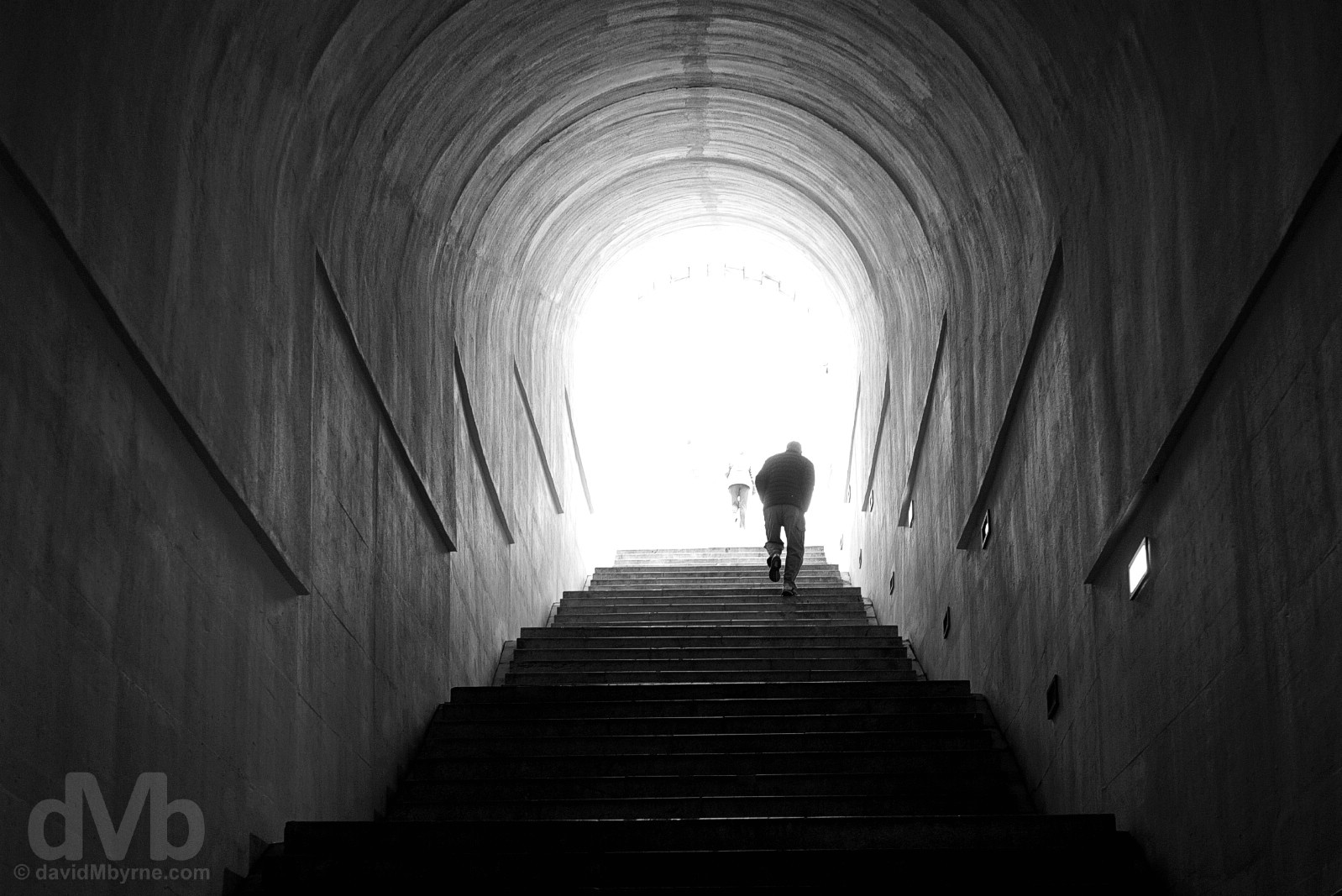
Towards the light. Tackling the 461 steps to Njegos Mausoleum, the world’s highest, in Lovcen National Park, Montenegro. April 20, 2017.
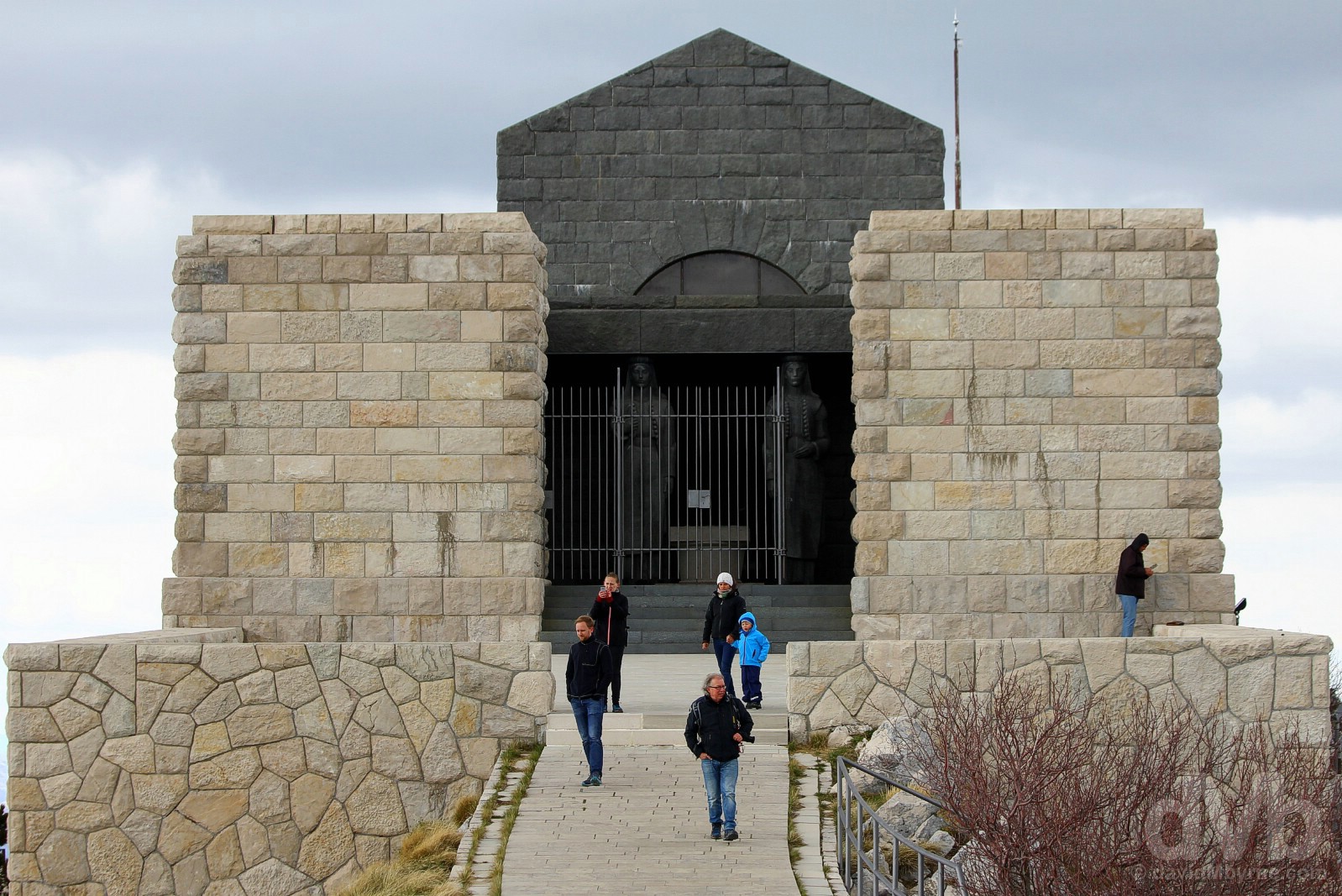
NJEGOS MAUSOLEUM || Built over a 4 year period between 1970 and 1974, this is the mausoleum, the highest in the world, of Montenegro’s greatest hero, Petar Petrovic II Njegos (1813-1851), considered both a spiritual and political leader credited with uniting the Montenegrin people and a poet cum philosopher whose works are considered some of the most important in the annals of Montenegrin and Serbian literature. Njegos, who died of tuberculosis aged thirty-seven, selected this location as his final resting place, overseeing the construction of a chapel here in 1845 to serve the purpose. It wasn’t until 4 years after his death that he was actually interred here, continuing political & warring strife over the years necessitating his remains being moved more than once between here and the nearby Cetinje Monastery. The chapel itself was demolished by the then ruling Yugoslavs in the 1960s with the present-day mausoleum built in the early 70s; Njegos has been an ever-present here since 1974. Njegos Mausoleum, Lovcen National Park, Montenegro. April 20, 2017.
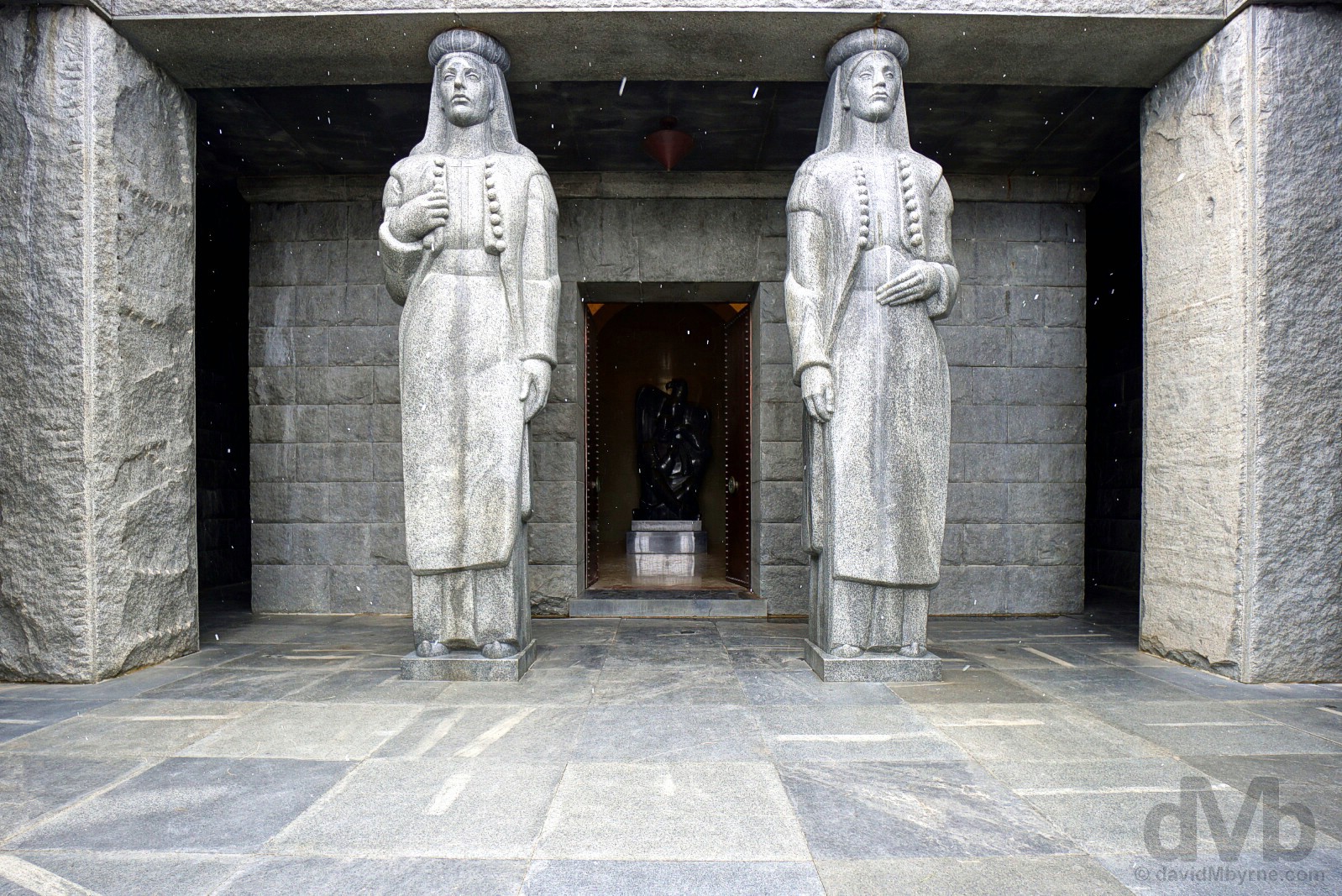
NJEGOS MAUSOLEUM || Chilly up to this point and many degrees cooler than down at sea level, it started to snow when I was poking around the innards of the mausoleum, the frigid temperatures complementing nicely with the abundant dark slate & granite of the mausoleum. See here are the two granite giantesses guarding the tomb. Njegos Mausoleum in Lovcen National Park, Montenegro. April 20, 2017.
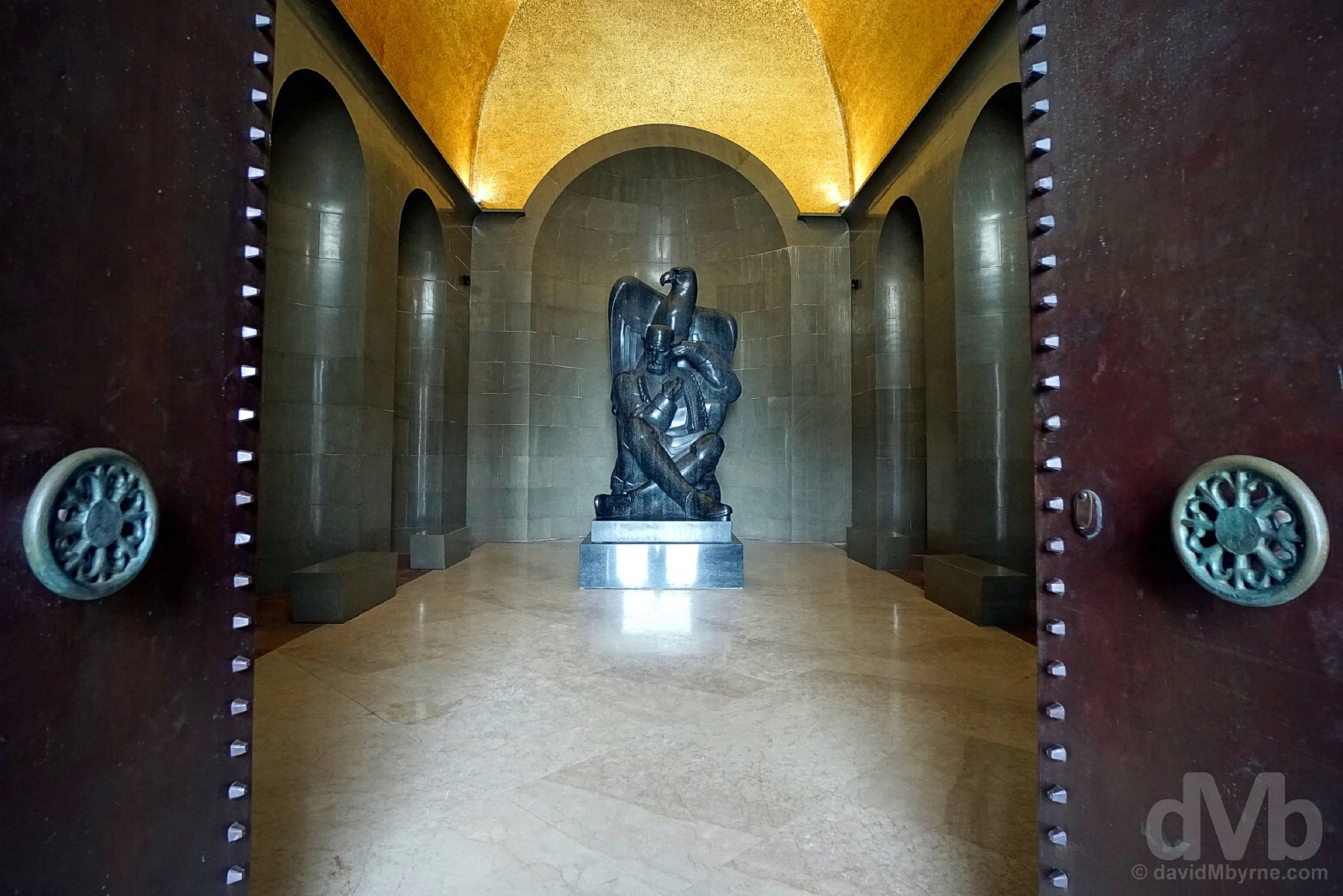
NJEGOS MAUSOLEUM || The centrepiece of the mausoleum, under a golden mosaic that did nothing to warm the scene, is a rather grandiose sculpture of Njegos himself resting in the wings of an eagle, a 28-tonne work by Crotaian sculptor Ivan Mestrovic that was carved from a single block of black granite. Njegos Mausoleum, Lovcen National Park, Montenegro. April 20, 2017.
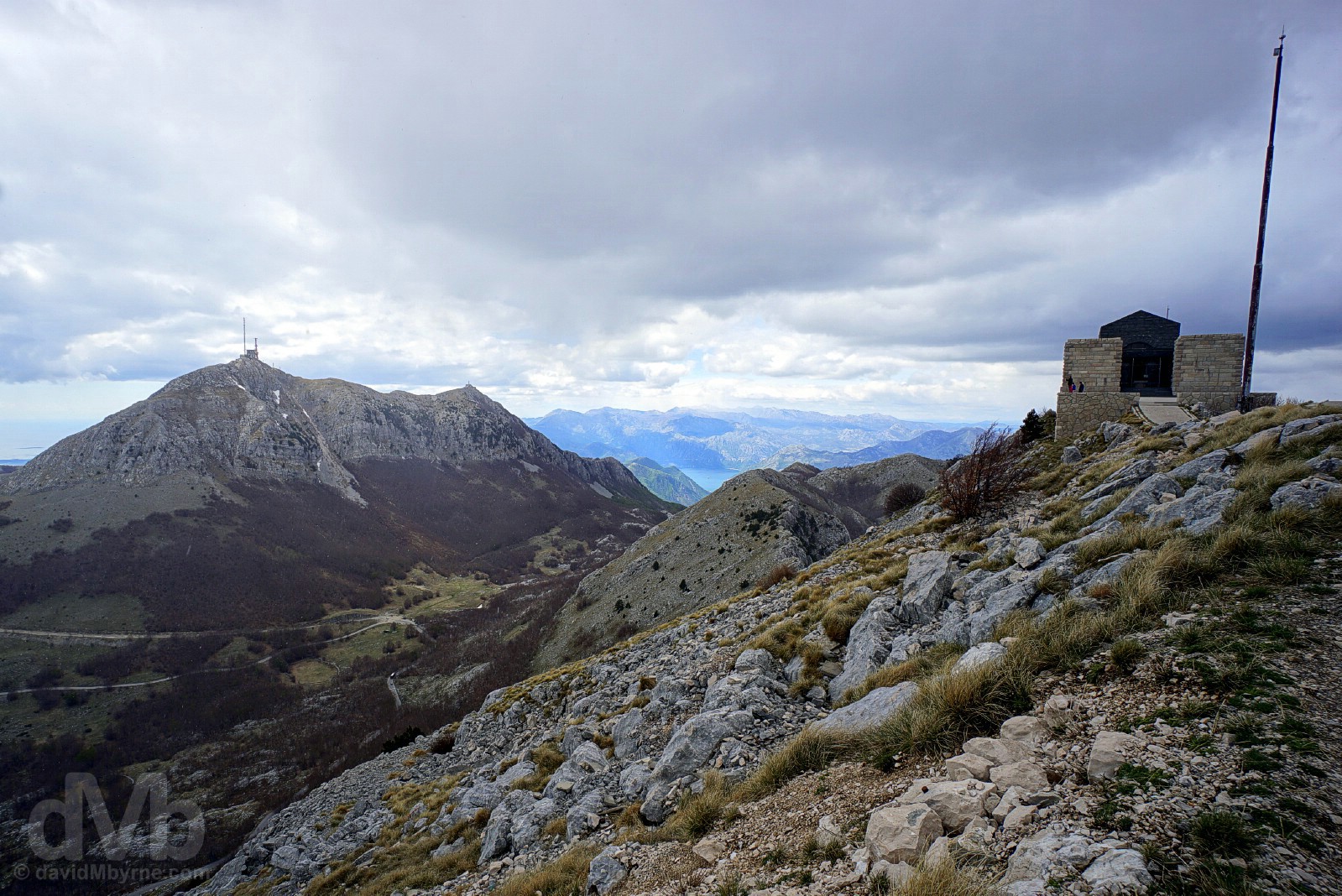
1,749-metre-high Mount Lovcen (left) & the Njegos Mausoleum atop the 1,657-metre-high peak Jezerski Vrh in Lovcen National Park, Montenegro. April 20, 2017..
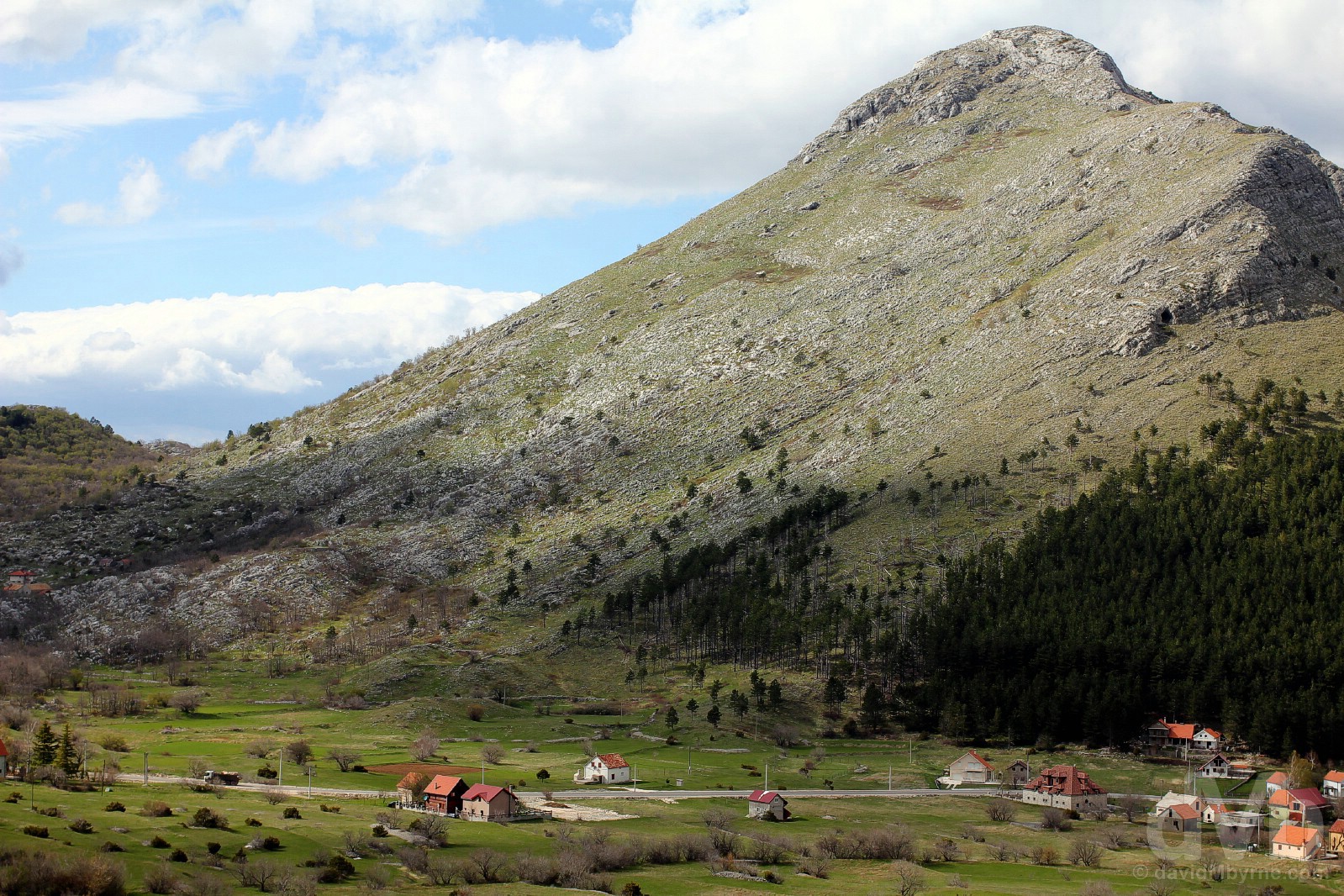
Scenery in Lovcen National Park, Montenegro. April 20, 2017.
Signing Off | The Complete Lovcen National Park Gallery

